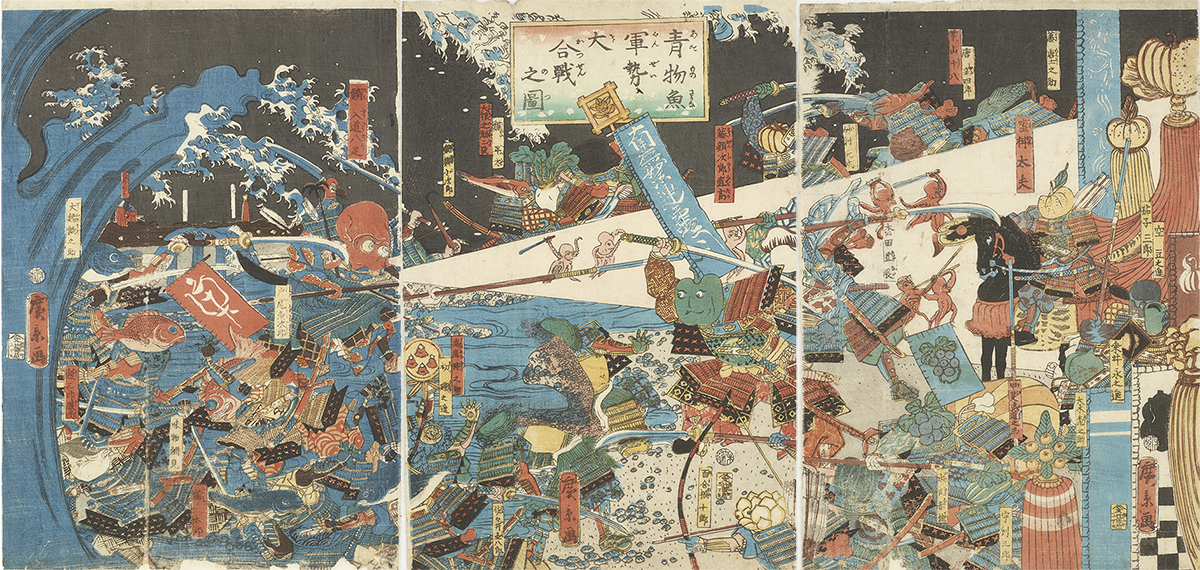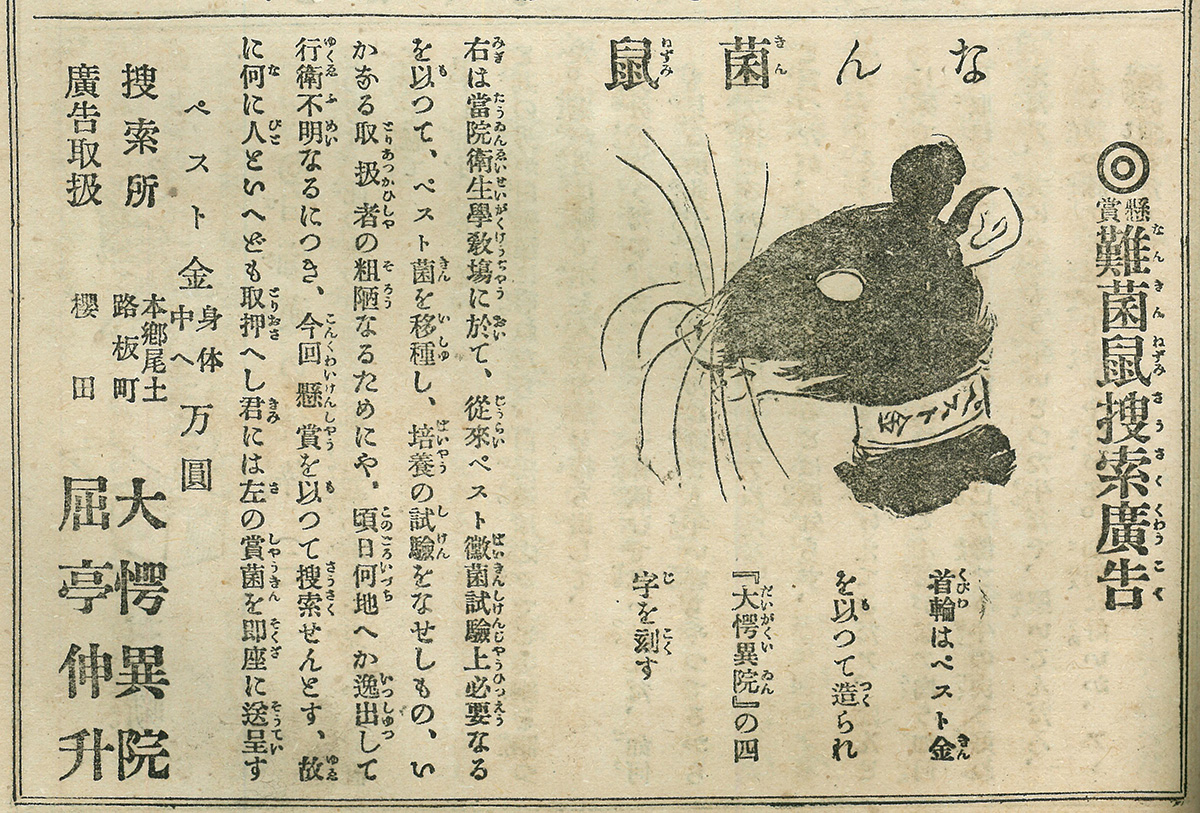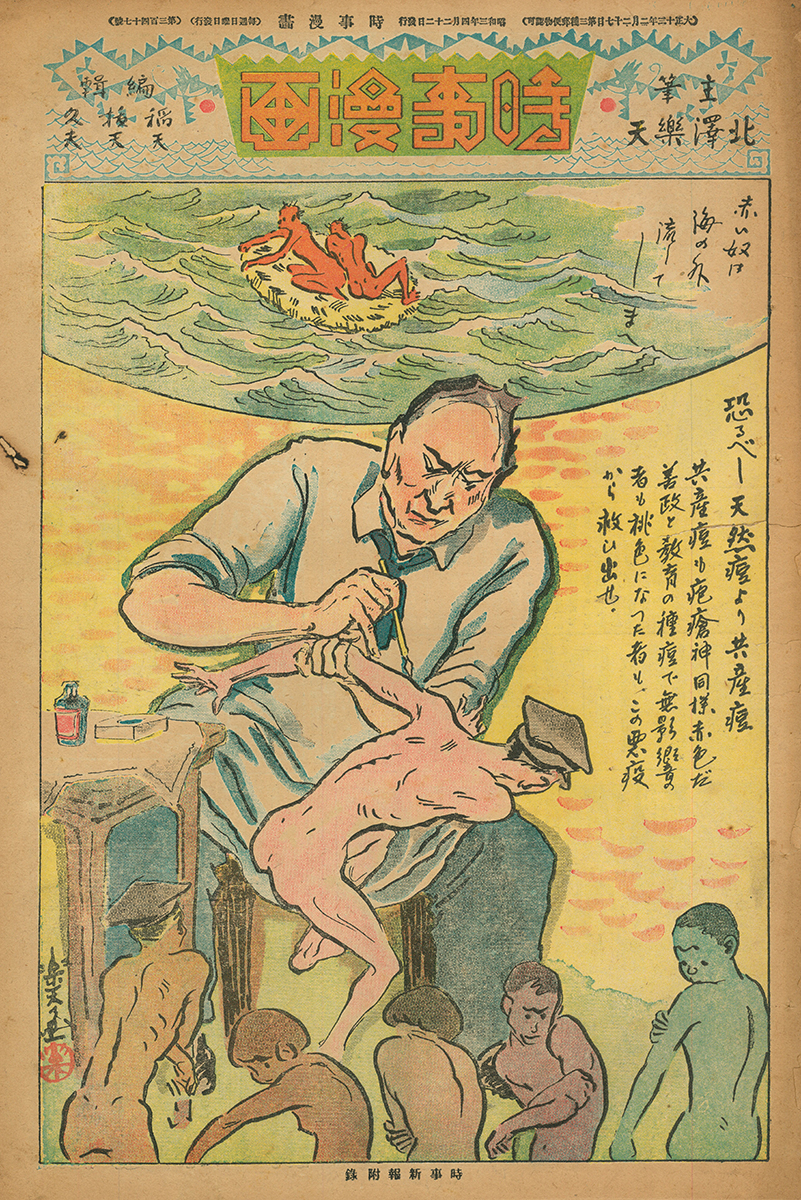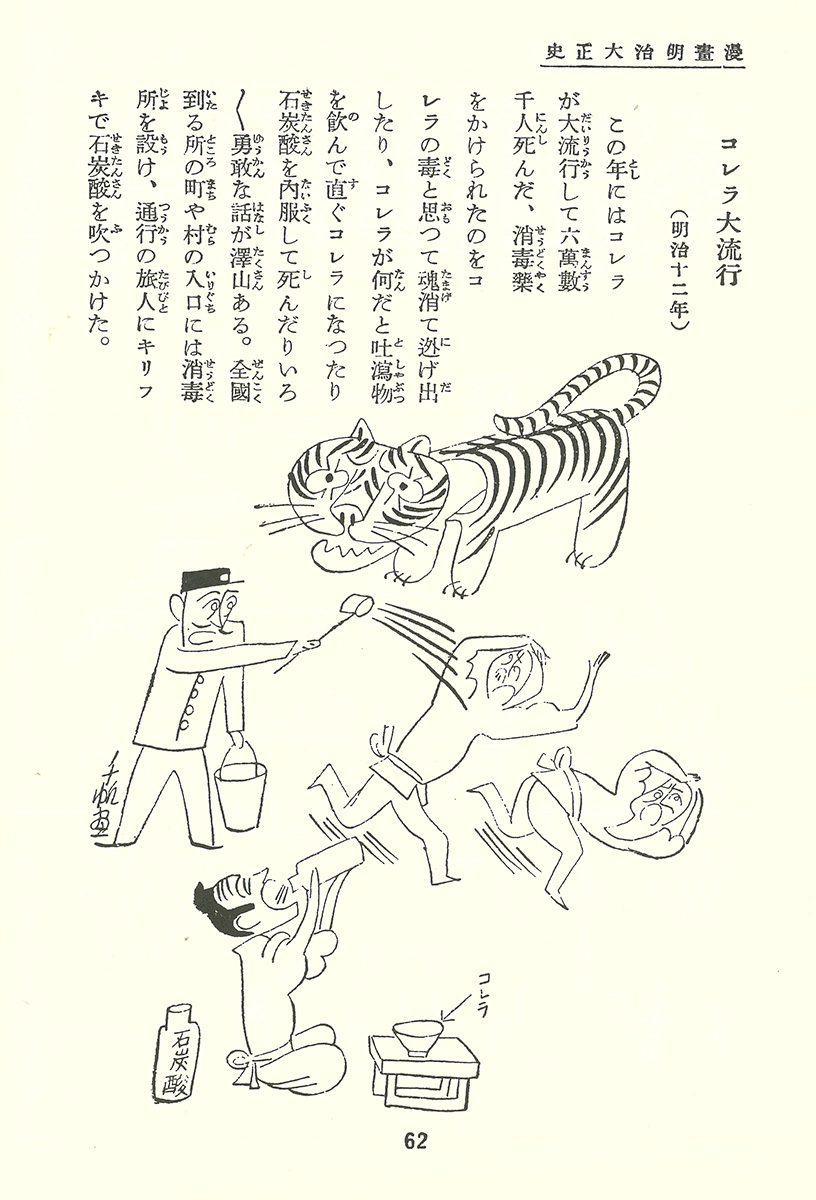
病と薬の大合戦 / Yamai to kusuri no okassen
歌川芳虎 / Utagawa Yoshitora
弘化4(1847)~嘉永5(52)年 / 1847-1852
左から攻めてくる様々な病気に対し、医学の神様・神農(しんのう)率いる薬軍が攻撃している。
In the picture, the army of medicine led by Shinno (Shennong), the god of medicine from Chinese mythology, is attacking all different kinds of diseases coming from the left side.









